Greater Lophorina
- December 17, 2023
- 0 comment
The Greater Lophorina (Lophorina superba) also known as the Superb Bird-of-Paradise or Greater Superb Bird-of-Paradise, is a species of bird-of-paradise native to the rainforests of New Guinea. It is one of the most common and widespread species of bird-of-paradise.
Greater Lophorina Physical Appearance
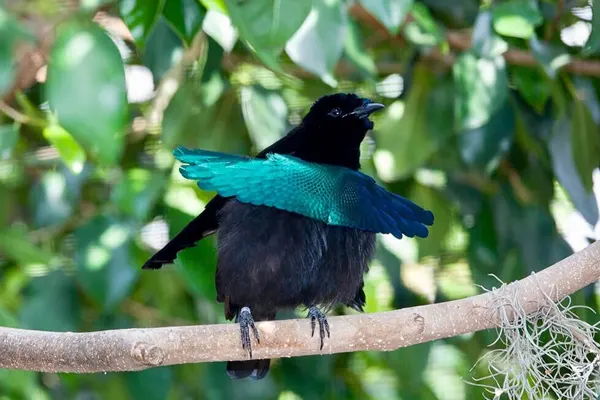
Greater Lophorina
- Lifespan: 15 years
- Habitat: Rainforest, Mid-Montane Forests, Lowland Forests.
- Diet: Fruits, Insects, and Small Vertebrates
- Size: Male: 32 cm, Female: 28 cm
- Weight: Male: 190 g, Female: 140 g
- Wingspan: Male: 115 cm, Female: 85 cm
- Conservation Status: Least Concern.
- Population Trend: Stable
This species of bird-of-paradise is native to New Guinea and is found in a variety of habitats, including mid-montane forests, lowland forests, and disturbed areas with Casuarinas. They are omnivorous and their diet consists mainly of fruits, insects, and small vertebrates.
Greater Lophorinas are known for their elaborate courtship displays. During displays, males raise their erectile fans over their heads and make a loud, rattling sound. Females are attracted to males with the most elaborate displays.
Feather Coloration of Greater Lophorina
The Greater Lophorina exhibits striking sexual dimorphism in feather coloration. Males possess a dazzling plumage primarily composed of black feathers, accentuated by metallic blue-green breast shields and patches above the eyes. These vibrant hues serve as a powerful visual signal during courtship displays, attracting potential mates and showcasing their fitness.
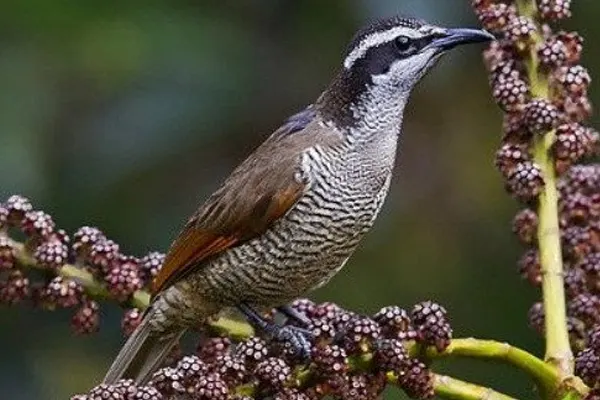
Female Greater Lophorina
- Overall Plumage: Gray-brown with rufous flight feathers
- Underparts: Barred
- Eye-stripe: Broad black
- Eyebrow: White
Male Greater Lophorina
- Overall Plumage: Black with iridescent blue-green accents
- Breast Shields: Metallic blue-green
- Supraorbital Patches: Metallic blue-green
- Fans: Black with erectile wire-like feathers
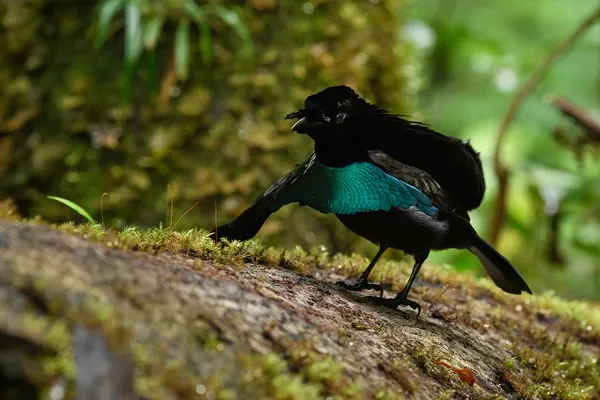
Flight Characteristics of Greater Lophorina
The Greater Lophorina’s flight characteristics reflect its specialized adaptations to the rainforest environment. Its maneuverability, hovering ability, and short burst flight patterns enable it to navigate the dense vegetation and exploit diverse food sources within its rainforest habitat.
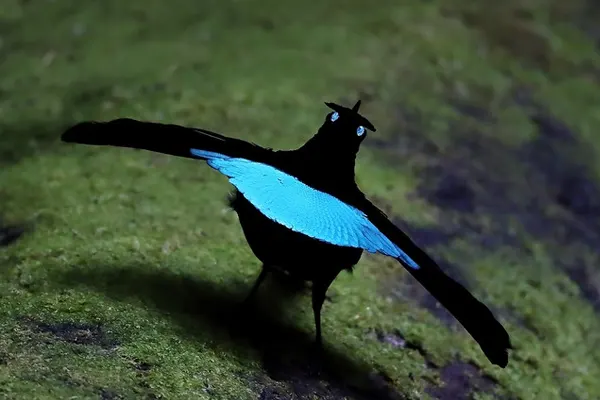
- Maneuverability: The Greater Lophorina possesses broad, rounded wings and a short tail, allowing for agile maneuverability through dense rainforest canopy. Its ability to rapidly change direction and navigate between branches is crucial for accessing fruits and insects within the forest’s intricate structure.
- Hovering and Agility: The Greater Lophorina can hover in mid-air, a maneuver that facilitates feeding on nectar and small insects. Its ability to hover and maintain a stable position allows it to extract nectar from flowers and capture prey items with precision.
- Short Burst Flight: The Greater Lophorina typically engages in short bursts of flight, alternating between periods of flapping and gliding. This energy-efficient strategy allows it to conserve energy while foraging and moving through the rainforest.
- Sound Production: During courtship displays, males produce a rattling sound by rapidly vibrating their erectile fans. These sounds are thought to attract females and serve as a display of male fitness.
Migration Patterns of Greater Lophorina
The Greater Lophorina (Lophorina superba) is a resident species endemic to the island of New Guinea, meaning it does not migrate long distances between breeding and non-breeding grounds. It inhabits a variety of rainforest ecosystems across the island, from mid-montane forests to lowland forests and disturbed areas with Casuarinas trees.
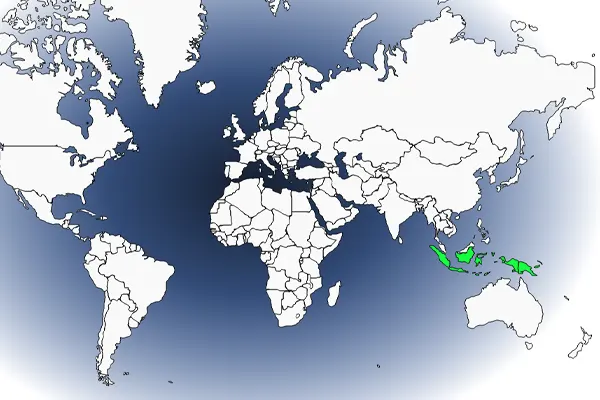

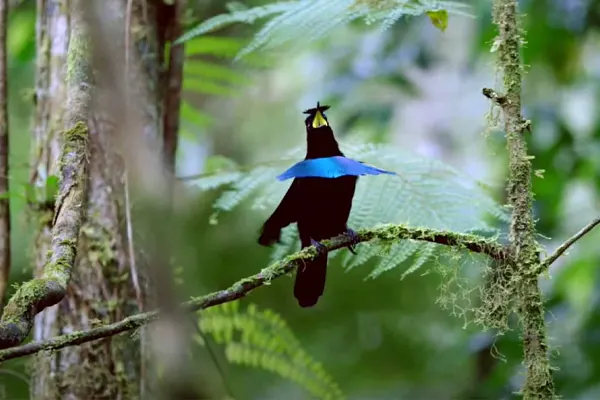
- Abundant Food Resources: New Guinea’s rainforests provide a year-round supply of fruits, insects, and other food sources, eliminating the need for long-distance migration to find sustenance.
- Stable Habitat: The rainforest ecosystems of New Guinea offer relatively stable environmental conditions, minimizing the need for seasonal migrations to different habitats.
- Adapted Lifestyle: The Greater Lophorina’s adaptations, such as maneuverable flight and specialized foraging strategies, are well-suited to exploiting the resources available in its rainforest habitat.
- Energy Conservation: Non-migration conserves energy, allowing the Greater Lophorina to allocate more resources to breeding, parental care, and other essential life functions.
Habitat & Distribution of Greater Lophorina
The Greater Lophorina primarily frequents mid-montane forests, ranging from altitudes of 1,000 to 2,300 meters. These forests are characterized by a dense canopy of trees, providing ample shelter and foraging opportunities. The Greater Lophorina also ventures into lowland forests and disturbed areas with Casuarina trees, demonstrating its flexibility in habitat selection.
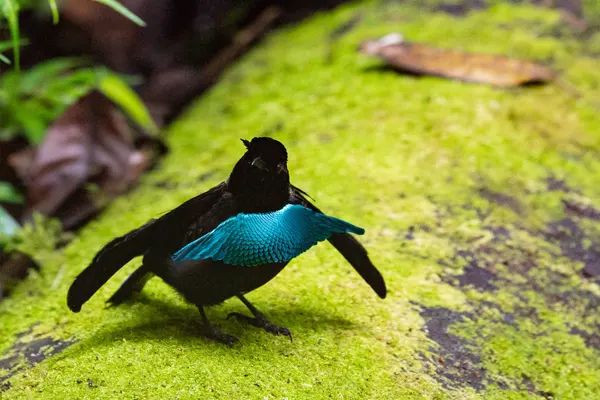
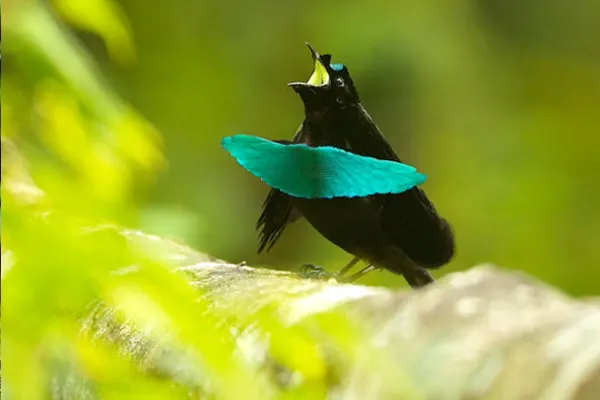
The Greater Lophorina’s diverse habitat preferences reflect its remarkable adaptability. In mid-montane forests, its maneuverable flight and ability to navigate dense vegetation allow it to access fruits and insects within the canopy. In lowland forests, it can exploit a wider range of food sources and explore various habitat layers. In disturbed areas with Casuarina trees, its adaptability enables it to utilize modified habitats while maintaining its ecological role.
Behavioral Traits of Greater Lophorina
Male Greater Lophorinas are renowned for their elaborate courtship displays, designed to attract potential mates. During these displays, males raise their two remarkable erectile fans over their heads, creating a spectacular visual spectacle. They also make a loud, rattling sound, further enhancing their courtship efforts. Females assess potential suitors based on the elaborateness of their displays, selecting mates that demonstrate superior fitness and reproductive potential.

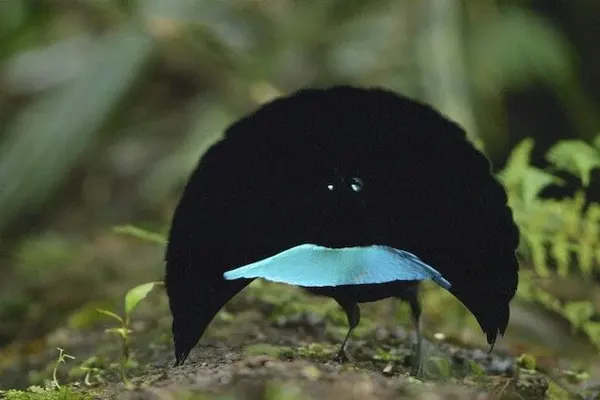
Male Greater Lophorinas exhibit territorial behavior, defending small territories of approximately 1.2 hectares. These territories provide them with access to food resources and potential mating opportunities. Males actively defend their territories against intruding males, engaging in aggressive displays and vocalizations.
Role in Ecosystem of Greater Lophorina
Greater Lophorinas consume fruits and disperse seeds, contributing to the regeneration and maintenance of rainforest habitats. As they feast on various fruits, they swallow the seeds, which pass through their digestive systems and are deposited in new locations during defecation. These dispersed seeds have a higher chance of germinating and establishing new trees, promoting forest regeneration and maintaining the biodiversity of plant life.

Greater Lophorinas act as pollinators for various plant species as they feed on nectar. While foraging for nectar, pollen from one flower gets attached to their feathers, which is then transferred to other flowers they visit, facilitating cross-pollination. This pollination process is crucial for the reproductive success of many plant species and contributes to the overall health and diversity of the rainforest ecosystem.
Dietary Habits of Greater Lophorina
Fruits are a major component of the Greater Lophorina’s diet, providing them with essential sugars and energy. They consume a wide range of fruits, including berries, figs, and small fruits from various tree species. Their ability to hover in mid-air and their maneuverable flight allow them to reach fruits in different parts of the rainforest canopy.
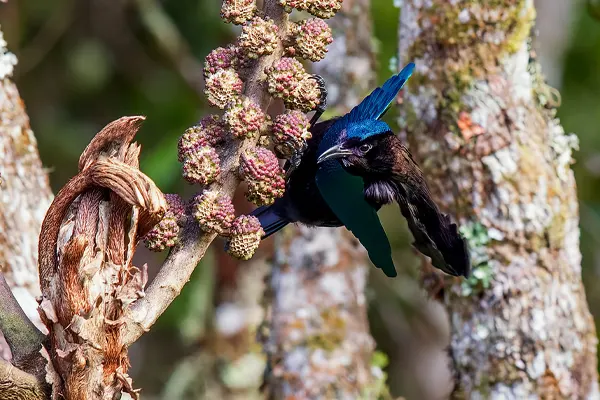
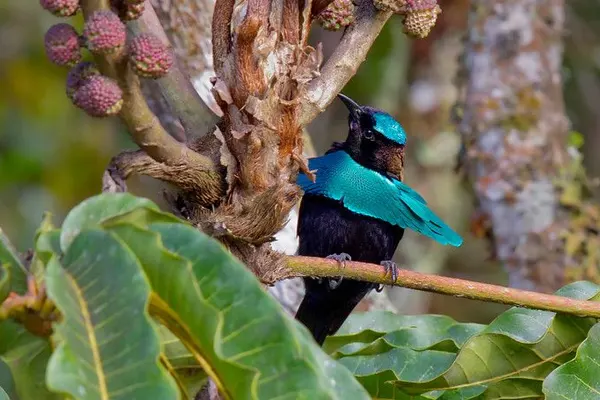
- Small Vertebrates: Occasionally, the Greater Lophorina may supplement their diet with small vertebrates, such as frogs, lizards, and small birds. They are opportunistic predators, taking advantage of prey encounters when they arise. Their ability to maneuver through dense vegetation and their sharp eyesight allow them to catch these elusive prey items.
- Insects: Insects are another important part of the Greater Lophorina’s diet, providing them with protein and essential nutrients. They actively forage for insects throughout the forest canopy, hopping between branches and probing moss and other epiphytic growth for their prey. Their ability to hover in mid-air allows them to capture insects with precision.
Interesting Facts of Greater Lophorina
Male Greater Lophorinas are known for their spectacular courtship displays, which involve raising their two remarkable erectile fans over their heads, creating a vibrant visual display. They also produce a loud, rattling sound to further attract potential mates. The Greater Lophorina exhibits striking sexual dimorphism in plumage. Males possess a dazzling black plumage with metallic blue-green breast shields and patches above the eyes, while females have a more subdued gray-brown plumage with rufous flight feathers and barred underparts.
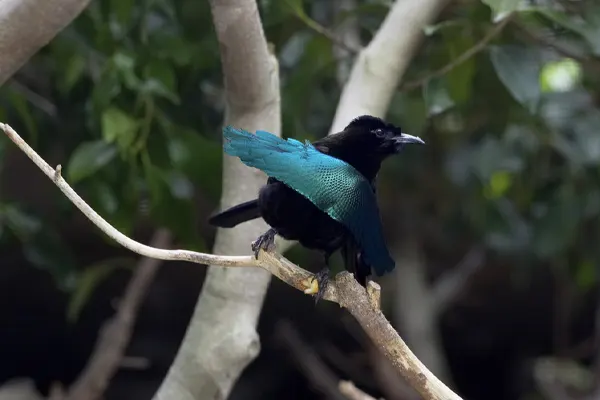
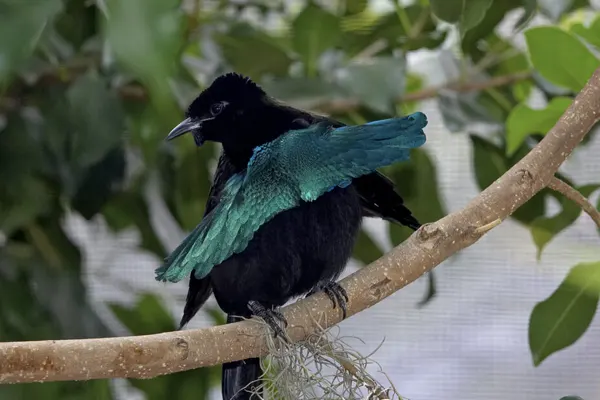
- Resourceful Foraging Strategies: Greater Lophorinas employ various foraging strategies to exploit different food sources. They hop between branches, probe moss and epiphytic growth for insects, and even join mixed-species foraging flocks to enhance their foraging success.
- Aerial Maneuverability: Greater Lophorinas possess broad, rounded wings and a short tail, allowing them for agile maneuverability through dense rainforest canopies. Their ability to hover in mid-air facilitates feeding on nectar and capturing prey with precision.
- Seed Dispersal and Pollination: Greater Lophorinas play a crucial role in seed dispersal and pollination within the rainforest ecosystem. They consume fruits and disperse seeds, promoting forest regeneration, and act as pollinators for various plant species as they feed on nectar.
Nesting Habits of Greater Lophorina
The Greater Lophorina’s nesting habits reflect their remarkable adaptations to the rainforest environment. Their seasonal nesting patterns, nest construction techniques, parental care, and nest site selection strategies all contribute to their reproductive success and the overall health of the rainforest ecosystem. Understanding these nesting habits is crucial for conservation efforts aimed at protecting this beautiful and ecologically important bird species.
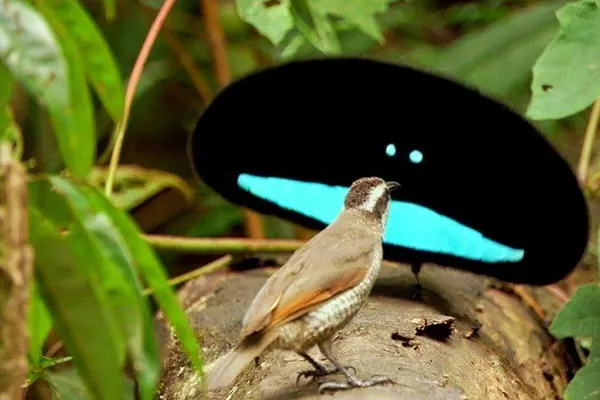
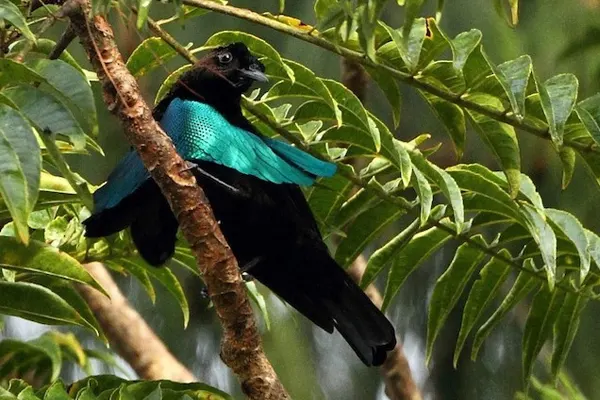
- Nesting Seasonality: Greater Lophorinas typically breed throughout the year, with nesting activity observed in various months across their range. However, there may be peak nesting periods depending on local conditions and food availability.
- Nest Construction: The responsibility of nest building falls solely on the female Greater Lophorina. She constructs a cup-shaped nest, often utilizing leaves, mosses, and other soft materials found within the rainforest canopy. These nests are typically built in trees, ranging from heights of 1.5 meters to over 10 meters above the ground.
- Egg-laying and Incubation: Female Greater Lophorinas typically lay 1-3 eggs per clutch. The eggs are oval-shaped and vary in color from cream to pale pink, occasionally with speckles. The incubation period lasts approximately 16-22 days, during which the female diligently cares for the eggs, keeping them warm and safe.
- Chick Development and Fledging: Upon hatching, the chicks are altricial, meaning they are born helpless and require parental care. Both parents contribute to chick rearing, providing food and protection until the young fledge and become independent. The fledging period typically lasts around 16-30 days, after which the young Greater Lophorinas disperse from their natal nest to establish their own territories.
- Nest Site Selection and Nest Defense: Female Greater Lophorinas carefully select nest sites that provide protection from predators and harsh weather conditions. They often choose locations high in the rainforest canopy, offering some degree of concealment and security. Additionally, male Greater Lophorinas may defend their nesting territories from intruding males to protect their offspring and potential mates.
Calls & Vocalizations of Greater Lophorina
Greater Lophorinas also exhibit a repertoire of calls and vocalizations that play essential roles in communication and territorial defense.
- Contact calls: These low-pitched calls are used for maintaining contact between individuals, especially within pairs or small groups. They help individuals locate each other and maintain social cohesion within their territories.
- Territorial calls: These louder and more assertive calls are used for marking and defending territories. They serve as a warning to intruding individuals and help establish dominance within the rainforest habitat.
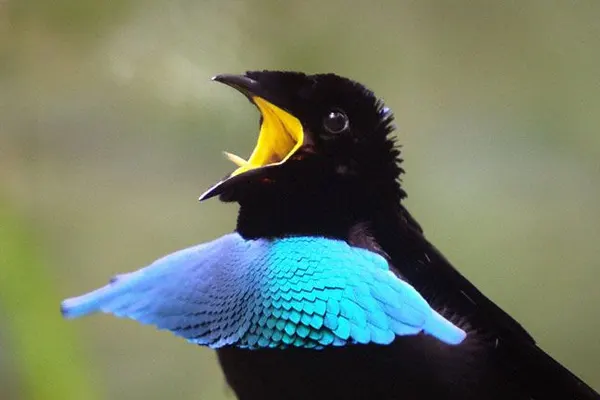
The specific calls and vocalizations of Greater Lophorinas vary in pitch, duration, and complexity.
- Maintaining social cohesion: Contact calls help individuals maintain contact with their mates, offspring, or other group members, facilitating social interactions and coordination.
- Establishing territories: Territorial calls act as acoustic markers, defining the boundaries of individual territories and deterring intrusions from other Greater Lophorinas.
- Attracting mates: Male courtship vocalizations serve as an important signal to potential mates, indicating their fitness and reproductive potential.
- Avoiding predators: Vocalizations can alert individuals to potential threats or predators, allowing them to take evasive action or defend themselves.
- Navigating the rainforest: Vocalizations may also aid in navigation, especially in dense rainforest environments, helping individuals locate mates, food sources, or suitable habitat areas.
Ecological Significance of Greater Lophorina
As omnivorous birds, Greater Lophorinas consume a variety of fruits, including berries, figs, and small fruits from various tree species. During their feeding activities, they swallow the seeds of these fruits, which pass through their digestive systems and are deposited in new locations during defecation. These dispersed seeds have a higher chance of germinating and establishing new trees,
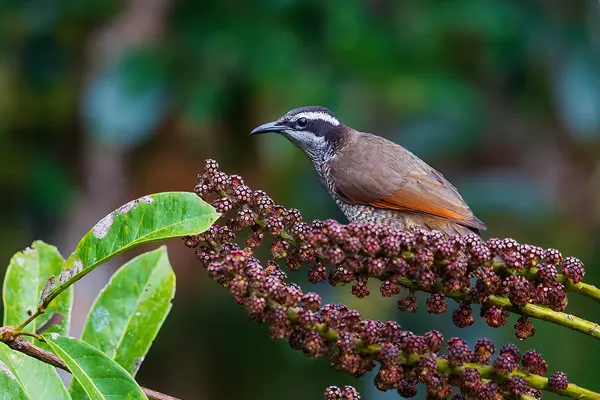
- Ecotourism Attraction: Greater Lophorinas, with their vibrant plumage and elaborate courtship displays, are a major draw for tourists to New Guinea. Their presence attracts nature enthusiasts and birdwatchers from around the globe, generating revenue for local communities and supporting conservation efforts. Ecotourism associated with Greater Lophorina observation contributes to the economic well-being of local residents and provides incentives for conserving the rainforest habitats that these birds depend on.
- Pollination: Greater Lophorinas act as pollinators for various plant species as they feed on nectar. While foraging for nectar, pollen from one flower gets attached to their feathers, which is then transferred to other flowers they visit, facilitating cross-pollination. This pollination process is essential for the reproductive success of many plant species and contributes to the overall health and diversity of the rainforest ecosystem.
- Ecotourism Attraction: Greater Lophorinas, with their vibrant plumage and elaborate courtship displays, are a major draw for tourists to New Guinea. Their presence attracts nature enthusiasts and birdwatchers from around the globe, generating revenue for local communities and supporting conservation efforts. Ecotourism associated with Greater Lophorina observation contributes to the economic well-being of local residents and provides incentives for conserving the rainforest habitats that these birds depend on.
Conservation Status of Greater Lophorina
The conservation status of the Greater Lophorina (Lophorina superba) is currently listed as Least Concern. This means that the species is not currently considered to be at risk of extinction, but it is still important to monitor its population trends and potential threats.

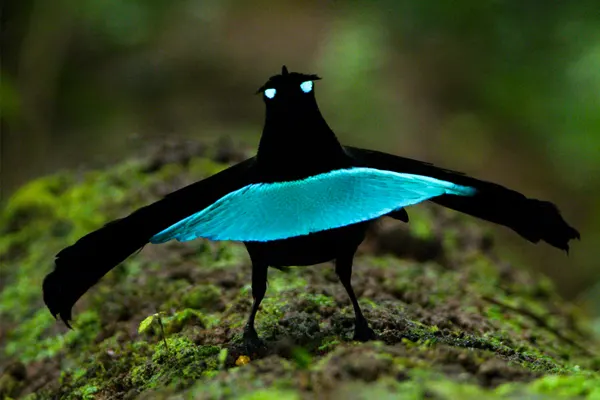
- Large population size: Estimates suggest that there are over 10,000 Greater Lophorinas in the wild.
- Stable population trend: The species’ population is not thought to be declining significantly.
- Wide distribution: The Greater Lophorina is found across a wide range of habitats in New Guinea, from mid-montane forests to lowland forests and disturbed areas with Casuarinas trees.
- Adaptability: The Greater Lophorina is an adaptable species that can tolerate some habitat modification.
- Habitat loss: Deforestation and habitat fragmentation are the primary threats to the Greater Lophorina. These activities reduce the amount of suitable habitat available for the species and can disrupt its foraging and breeding behavior.
- Hunting: The Greater Lophorina has been hunted for its plumage in the past, although this practice is now less common.
- Climate change: Climate change could have a negative impact on the Greater Lophorina by altering its habitat distribution and availability of food resources.
Research and Ongoing Studies
Study this remarkable bird-of-paradise, researchers are gaining valuable insights into its ecology, behavior, and conservation needs. This knowledge is essential for ensuring the long-term survival of the Greater Lophorina and preserving the vibrant rainforest ecosystems they call home.

- Habitat Use and Selection: Researchers are investigating the specific habitat preferences of Greater Lophorinas, identifying the key environmental factors that influence their habitat selection and distribution across different rainforest ecosystems.
- Diet and Foraging Strategies: Detailed studies are being conducted to determine the precise composition of the Greater Lophorina’s diet, examining the types of fruits, insects, and small vertebrates they consume. Researchers are also investigating their foraging strategies, including their techniques for capturing prey and utilizing different food sources within the rainforest canopy.
- Reproductive Biology and Breeding Behavior: Researchers are closely monitoring Greater Lophorina breeding pairs to understand their mating systems, courtship displays, nesting habits, parental care, and chick development. This information is crucial for assessing reproductive success and identifying potential factors affecting their breeding biology.
- Population Dynamics and Monitoring: Long-term population monitoring programs are being implemented to assess the population size, trends, and distribution of Greater Lophorinas across their range. This data is essential for evaluating the species’ conservation status and identifying potential threats to their populations.
Educational and Ecotourism Opportunities
The Greater Lophorina (Lophorina superba), also known as the Superb Bird-of-Paradise, offers a wealth of educational and ecotourism opportunities due to its stunning plumage, elaborate courtship displays, and ecological significance within the rainforest ecosystem.

- Birdwatching and Nature Education: Observing Greater Lophorinas in their natural habitat provides an unparalleled opportunity for birdwatching enthusiasts and nature lovers to learn about their behavior, ecology, and conservation status. Educational programs can focus on identifying different bird species, understanding their adaptations, and appreciating the intricate relationships within the rainforest ecosystem.
- Conservation Education: Greater Lophorinas can serve as flagship species for conservation education programs, highlighting the importance of protecting rainforest habitats and biodiversity. Educational initiatives can raise awareness about the threats faced by Greater Lophorinas, such as habitat loss and fragmentation, and promote sustainable practices that benefit both the species and the overall ecosystem.
- Cultural and Indigenous Knowledge: Greater Lophorinas hold cultural and spiritual significance for indigenous communities in New Guinea. Educational programs can incorporate indigenous knowledge and perspectives, fostering understanding and appreciation for the cultural connections between humans and the natural world.
- School Programs and Curriculum Integration: Greater Lophorinas can be incorporated into school curricula to enhance student engagement and understanding of biology, ecology, and conservation. Educational resources, such as interactive activities, multimedia presentations, and field trips to observe Greater Lophorinas, can enrich the learning experience and foster a lifelong appreciation for the natural world.
Conclusion
The Greater Lophorina, commonly known as the Vogelkop superb bird-of-paradise (Lophorina superba), stands as a truly extraordinary and visually striking species within the avian world. With its intricate and elaborate courtship displays, this bird exemplifies the lengths to which nature can go in the pursuit of mating success.
The male’s remarkable transformation during courtship, characterized by its mesmerizing dance, iridescent plumage, and unique shape-shifting cape, highlights the evolutionary adaptability driven by sexual selection. These elaborate displays are not merely a spectacle but represent an intricate interplay between biology and behavior, shaped over generations.
The Vogelkop superb bird-of-paradise’s presence in the rainforests of New Guinea adds to the rich biodiversity of this region. However, the challenges it faces, including habitat loss and potential pressures from human activities, underscore the importance of conservation efforts to preserve not only this species but also the ecosystems it inhabits.
The unique behaviors and stunning visual displays of the Greater Lophorina contribute not only to the scientific understanding of avian biology but also to the appreciation of the sheer diversity and beauty found in the natural world. As we continue to explore and study these captivating creatures, we deepen our connection to the intricate tapestry of life on Earth, emphasizing the need for conservation and responsible stewardship of our planet’s biodiversity.


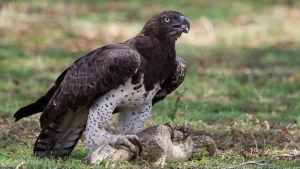
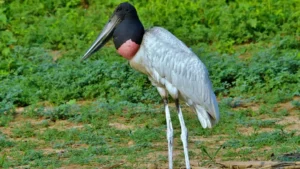
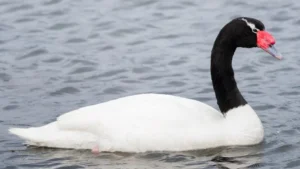


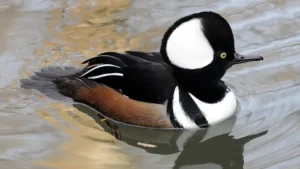
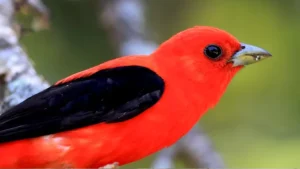
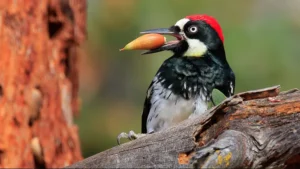


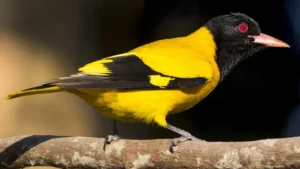
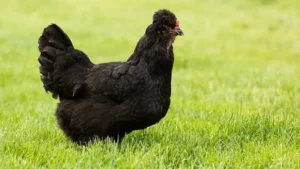
Leave your comment